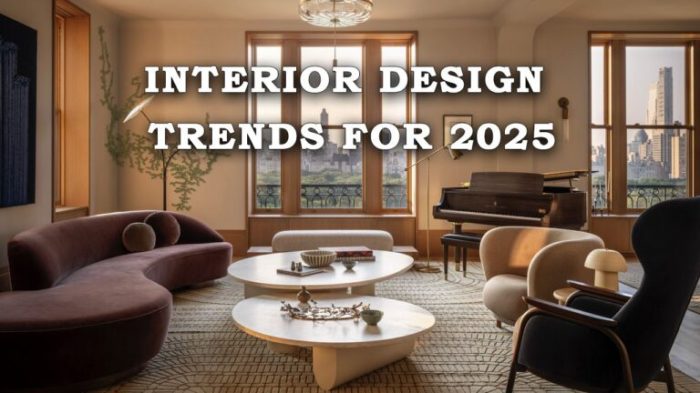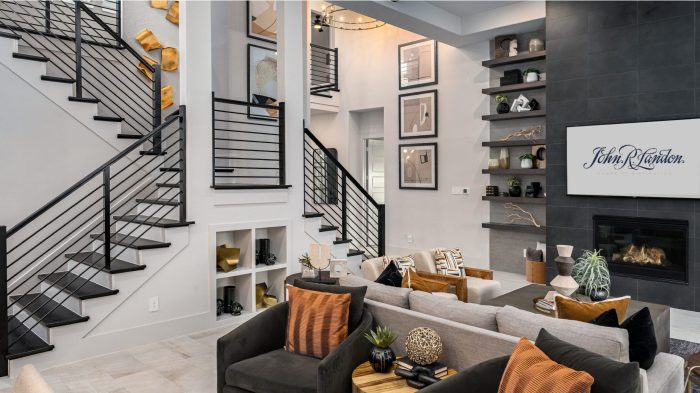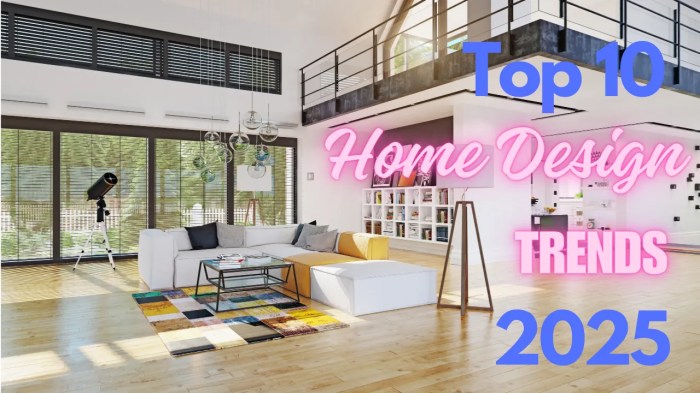As Fine Homebuilding Design Trends for 2025 takes center stage, this opening passage beckons readers into a world crafted with good knowledge, ensuring a reading experience that is both absorbing and distinctly original. The upcoming trends in home design promise to revolutionize the way we live, incorporating cutting-edge materials, sustainability practices, and innovative technologies to create homes that are both functional and aesthetically pleasing.
Fine Homebuilding Design Trends for 2025

As we look ahead to 2025, there are several key trends shaping the design of homes. From emerging materials to the role of sustainability, technology, and the impact of the global pandemic, the future of home design is taking on new dimensions.
Emerging Materials in Home Design
With advancements in technology and a growing focus on sustainability, we can expect to see a rise in the use of innovative materials in home construction. Materials such as engineered wood products, recycled glass countertops, and solar-reflective roofing materials are likely to dominate the design landscape in 2025, offering both aesthetic appeal and eco-friendly benefits.
The Role of Sustainability
Sustainability continues to be a driving force in shaping home design trends for 2025. Homeowners are increasingly seeking energy-efficient solutions, such as passive solar design, green roofs, and rainwater harvesting systems. The integration of sustainable practices into home design not only reduces environmental impact but also enhances the overall quality of living spaces.
Technology in Home Design
Advancements in technology are revolutionizing the way homes are designed and built. From smart home systems that automate functions to 3D printing for rapid construction, technology is offering new possibilities for customization and efficiency in home design. In 2025, we can expect to see homes that are not only smarter but also more responsive to the needs and preferences of their occupants.
Impact of the Global Pandemic
The global pandemic has had a profound impact on home design trends for 2025. With the rise of remote work and the increased focus on health and wellness, homeowners are reevaluating the layout and functionality of their living spaces. Features such as home offices, outdoor living areas, and improved ventilation systems are becoming more prevalent as homeowners prioritize comfort, productivity, and overall well-being.
Innovative Architectural Features

As we look ahead to 2025, the architectural landscape of homes is set to undergo significant changes, embracing futuristic elements that combine aesthetics with functionality.
Integration of Smart Home Technology
The integration of smart home technology into architectural design is becoming increasingly prevalent, with homes designed to seamlessly incorporate features such as automated lighting, temperature control, and security systems. These advancements not only enhance convenience but also improve energy efficiency and overall sustainability.
Evolution of Open Floor Plans
Open floor plans are evolving to meet changing lifestyle needs, with a focus on creating versatile spaces that cater to modern living. Expect to see flexible layouts that blur the lines between different areas of the home, allowing for seamless transitions and multifunctional use of space.
Incorporation of Outdoor-Indoor Living Spaces
One of the key trends in home design for 2025 is the incorporation of outdoor-indoor living spaces, creating a harmonious blend between the interior and exterior of the home. This trend emphasizes the connection to nature, with features such as expansive windows, outdoor kitchens, and integrated landscaping that bring the outdoors in.
Interior Design Trends
In 2025, interior design trends are expected to focus on a combination of functionality, sustainability, and aesthetics.
Color Palettes
Color palettes predicted to be popular in interior design for 2025 are expected to include earthy tones, soothing blues, and muted pastels. These colors create a calming and welcoming atmosphere, reflecting the growing trend towards creating tranquil and serene living spaces.
Sustainable Materials
The use of sustainable and eco-friendly materials in interior design is gaining momentum in 2025. Designers are incorporating materials like reclaimed wood, bamboo, cork, and recycled glass to reduce environmental impact and promote a healthier indoor environment. This shift towards sustainability highlights the importance of responsible design practices in the industry.
Minimalism and Decluttering
The influence of minimalism and decluttering continues to shape interior design trends in 2025. Homeowners are opting for clean, streamlined spaces that prioritize functionality and simplicity. This approach not only creates a sense of calm but also maximizes the use of space efficiently, reflecting a desire for a more organized and clutter-free living environment.
Multifunctional Furniture
Multifunctional furniture is transforming interior spaces in 2025 by offering practical solutions for smaller living areas. Designers are incorporating innovative pieces like modular sofas, convertible tables, and hidden storage units to optimize space and enhance versatility. This trend caters to the growing demand for adaptable and flexible living arrangements, providing homeowners with customizable options to meet their evolving needs.
Energy Efficiency and Sustainability
As we look towards the future of home design in 2025, energy efficiency and sustainability play a crucial role in shaping the way homes are built and operated.
Advancements in Energy-Efficient Technologies
One of the key trends in 2025 is the continued advancement of energy-efficient technologies for homes. From smart thermostats to energy-efficient appliances, homeowners are able to reduce their energy consumption and lower their utility bills.
Incorporation of Renewable Energy Sources
Another significant trend is the increasing use of renewable energy sources in home construction. Solar panels, wind turbines, and geothermal systems are becoming more common, allowing homeowners to generate their own clean energy and reduce their reliance on traditional power sources.
Net-Zero Homes
Net-zero homes, which produce as much energy as they consume, are gaining popularity in 2025. These homes are designed with energy-efficient features and renewable energy systems to achieve a balance between energy usage and production, ultimately reducing the home's carbon footprint.
Sustainable Design Practices
Sustainable design practices are at the forefront of home construction, shaping the homes of the future. From using eco-friendly materials to incorporating passive heating and cooling strategies, architects and builders are prioritizing sustainability to create more environmentally friendly homes.
Closing Summary

In conclusion, the future of home design in 2025 is poised to be a harmonious blend of style, sustainability, and technological advancements. With a focus on energy efficiency, innovative architectural features, and evolving interior design trends, homes of the future are set to be truly remarkable.
Stay tuned as we witness the transformation of living spaces into sophisticated and eco-friendly sanctuaries for the modern homeowner.
Expert Answers
What are some emerging materials expected to dominate home design in 2025?
Materials such as recycled glass, sustainable wood, and carbon fiber are anticipated to be prevalent in home design trends for 2025.
How is technology influencing the design of future homes?
Technology is shaping future homes through smart home integration, automation systems, and energy-efficient solutions that enhance convenience and sustainability.
What color palettes are predicted to be popular in interior design for 2025?
Earth tones, muted pastels, and bold jewel tones are expected to dominate interior design color palettes in 2025.
What advancements in energy-efficient technologies can we expect for homes in 2025?
Homes in 2025 are likely to feature innovations like solar panels, smart thermostats, and improved insulation to boost energy efficiency.
















